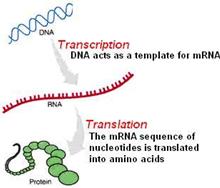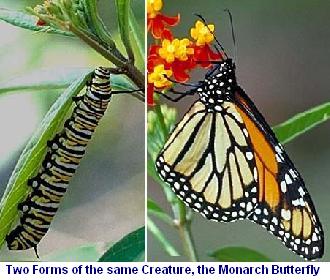| |
The sequence of amino acids that make up a protein and the number that is linked together is determined by the genetic code (the nucleotide sequence) contained in the DNA of the organism. For multi-celled organisms, this mainly takes place in the nucleus of the cell.

The making of a single amino acid begins with a sequence of three DNA nucleotides called a codon.
Messenger RNA Transcribes DNA
Special enzymes in the nucleus make an RNA copy of a sequence of DNA codons. This process is called transcription, because the DNA codons are transcribed into the structure of the RNA. In this way the genetic code acts as a blueprint.
This special RNA is called messenger RNA (mRNA) because it carries its codon messages out of the nucleus and into the cytoplasm of the cell, where the protein is made.
Messenger RNA is Translated at the Ribosome
The mRNA is loaded onto a ribosome of the cell, a special organelle that is specialized for protein production. Other RNA molecules, called transfer RNA (tRNA), carry amino acids to the site, and if the mRNA has the codon that the tRNA recognizes, the amino acid is added to a chain of amino acids that become a protein. This process is called translation, because the mRNA sequence of codons is translated into amino acids.
|
|
Some proteins also undergo modifications after their initial production.

The cells in a multi-cellular organism become different from one another because they make and accumulate different sets of RNA and protein molecules. They do this without changing their DNA. The cell is able to conrol the proteins it makes by allowing only certain of its DNA genes to be expressed.
Different genes are expressed also at different stages of an organisms life cycle. Gene expression and the proteins that result may also be a response to changes in the environment, including disease and injury.
|
|